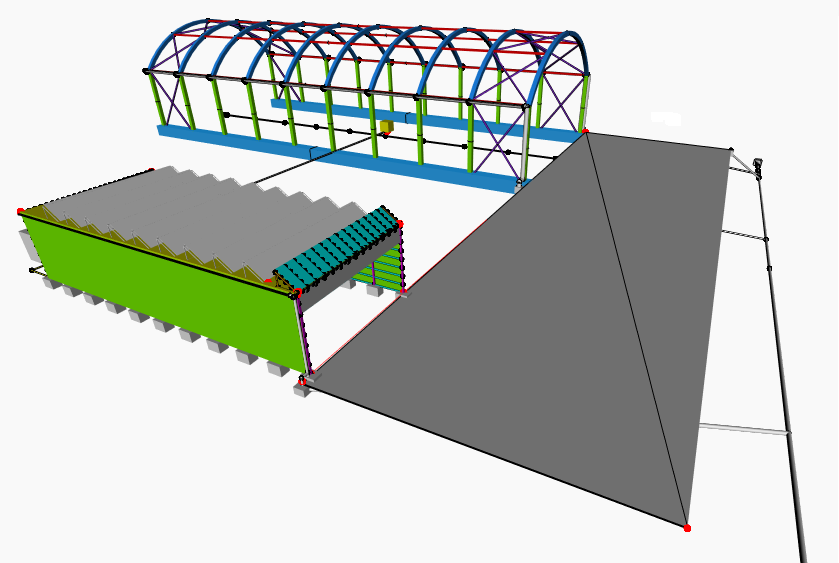Parametric behaviour, implemented with topological relations, defines how parts will interact with one another in order to support their function. Structural constraints or spatial contexts define some parameters, as explained below.
For the Dynamo integration, the factory and the warehouse were considered as the main systems, and the other systems were planned and designed to allow for optimum operation of logistics. Both the warehouse and the factory have their fixed origin points, but parameters such as length, width, and height allow to explore the space and to select the configuration that best fits the purpose of their use.
As can be seen in the picture below, a concrete pavement extends from the beginning of the warehouse to the end of the factory, therefore the length of the esplanade is a dependent parameter. This new system is the interface that allows the logistics hub to work as a whole. The pavement surface has a slope that conducts the rain water to the rainwater chambers located in opposite corners of the esplanade. These rainwater chambers also gather the water from the gutters of the roofs of the two buildings. They then connect to the public rainwater collector through secondary pipes. These pipes have a slope of 5% that allow for correct drainage. Also, the diameter of these pipes depends on the total surface drainage: when the surface exceeds 18.000 m2 a diameter of 0,40m is required, otherwise, a diameter of 0,25 m is enough for sufficient drainage. The length of this rainwater pipe is determined by the esplanade size, which in turn is defined by the width of the buildings.
The photovoltaic power plant supplies the energy for the factory operation. To reduce surface occupancy, the power plant is located on the roof of the warehouse. Parameters such as the length of the panels and the angle of inclination allow different configurations. The length and quantity of panel’s rows is a dependent parameter of the dimensions of the warehouse. These parameters allow to explore a wide range of total power output to supply the factory.
To store energy for periods of less sunlight, a small shelter in the back of the warehouse contains batteries, an inverter, and other electrical devices. This shelter connects to the factory for the power supply.
Figure 8 presents a snapshot of the Logistics Hub integrated system as it was modelled in Dynamo.
